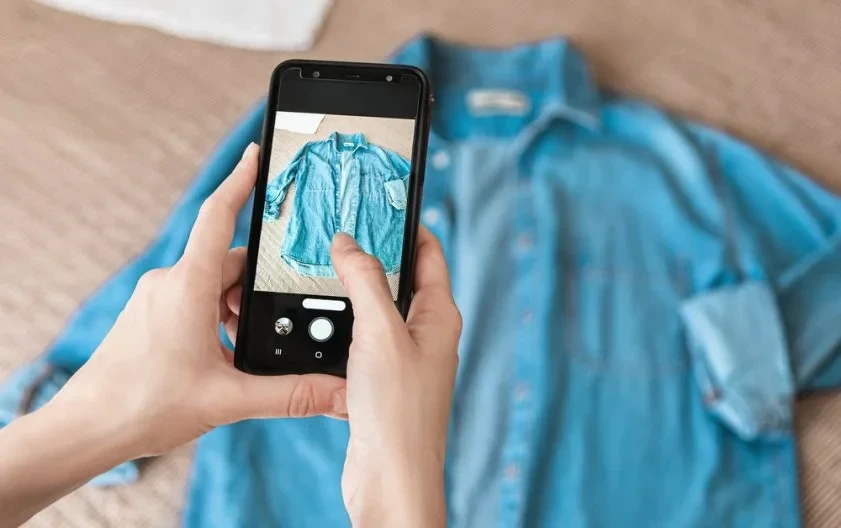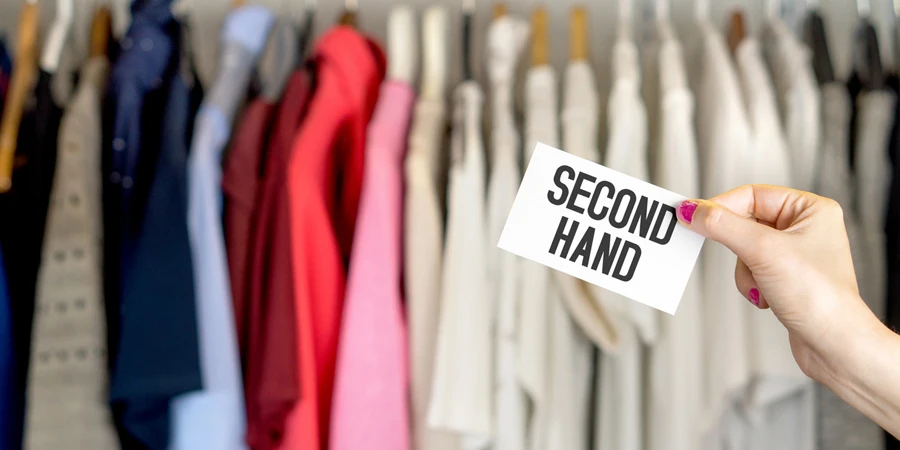An increasing number of apparel brands are setting up their own fashion resale platforms or offering a rental service for their garments. What is behind this trend and what does it mean for both the fashion sector and consumers?

Resale and rental have become an increasingly large part of the fashion sector. While eBay, Vinted and Thredup have been offering consumers a chance to buy and sell apparel second-hand for many years, more recently we’ve seen apparel brands launching their own fashion resale platforms and rental sites.
Fashion rental and resale is becoming an increasing focus for the apparel sector. High end brands have joined the trend including the UK’s Burberry, which launched its resale platform My Wardrobe HQ in 2021. Value retailers are also jumping on the bandwagon.
For instance, Swedish fashion brand H&M launched H&M Pre-Loved with ThredUp in 2023, the Boohoo Group’s Pretty Little Thing fashion site has its own resale marketplace and Zara is continuing to expand its Pre-Owned platform across Europe.
In 2023 credit card company Barclaycard and analysts Development Economics estimated that the so-called “re-commerce economy” is now worth £7bn ($8.86bn) in the UK alone.
The global secondhand apparel market is also projected to grow by 127% by 2026, three times faster than the global apparel market overall, according to the tenth annual ‘Resale Report’ from online resale store Thredup Inc.
Gayle Tait, CEO at fashion resale platform provider Trove, told Just Style that resale has become “table-stakes” for apparel brands. “In the right model, resale can grow to another revenue channel where a single item can be resold multiple times through its lifecycle, enabling brands to monetise it multiple times.”
Reaching a new demographic
While the thriftiness of fashion resale and rental has always been attractive to some consumers, younger demographics – and Gen Z in particular – are increasingly drawn to vintage and secondhand apparel as a style choice.
Tait explained: “These customers often aspire to higher quality brands, and the more accessible prices that secondhand items allow increases access.”
Thomas S. Robertson, professor of marketing at the Wharton School and an expert in retail strategy, wrote in the Harvard Business Review that apparel brands have previously worried about their customers “trading down” to cheaper, secondhand items.
“What should really worry companies is this: If they don’t sell their own used products, someone else will,” he wrote. He suggested the biggest driver behind this trend is Gen Z, who are “powerfully motivated by the idea of sustainability”.
Potential positives for the planet
With many consumers choosing resale and rental fashion because of its green credentials, is shopping secondhand actually sustainable?
In 2023 online secondhand marketplace Vinted claimed that on average shopping for secondhand fashion on its site instead of buying new saved 1.8kg of carbon dioxide equivalent.
Trove has also published research into the impact of resale on the planet. A report co-authored with software provider Worldly found that circular apparel models using resale are ineffective strategies for fast fashion brands “due to low-priced items”.
The research modelled five apparel brand archetypes and calculated the carbon footprint of 38 products, concluding that by 2040 resale initiatives have the potential to lower annual carbon emissions for these brands by 15-16%.
However, while this was true for most brand archetypes, the research also found that the potential impact of resale was lesser in the fast fashion segment, which did not see its carbon emissions fall using a resale platform.
According to the research, fashion brands can maximise the environmental benefits of their resale platform by increasing the value of their products in their secondary markets. Product durability and timeless style are key here, as well as low rejection rates.
Instead of focussing on resale platforms, Trove recommended that fast fashion brands “can create a greater impact and be more effective at reducing emissions” by focussing their efforts on their supply chains and material innovation.
Is resale open to greenwashing claims?
Speaking at a roundtable discussion on the report’s findings, the head of global design innovation at US fashion brand Levi Strauss & Co, Paul Dillinger, said: “I think a lot of brands use [resale] as a communication platform to just sort of virtue signal.”
Dillinger went on to say that this type of model is “intellectually dishonest” when the resale model does not quantify how it is reducing the production of new products.
Trove’s Tait told Just Style: “Environmental impact efforts should not be thought of as a marketing campaign or experimental ‘add on’. For brands to make a real impact, it’s important to understand what model works best for their vertical, such as outdoor, luxury or fast fashion, and to understand what methods will be most effective.”
While higher-end and outdoor apparel brands may be able to use resale as a means of reducing their impact on the planet, it’s clear that fast fashion may struggle to hold its value when it becomes secondhand.
More importantly, apparel brands should also remember that they would have a much greater impact if they looked to the other end of their products’ life cycles.
“Supply chain decarbonisation efforts continue to have the greatest overall greenhouse gas reduction potential, since this is where the majority of emissions occur,” Tait explained. “Brands should continue to prioritise investment in this area for impact reduction.”
Source from Just Style
Disclaimer: The information set forth above is provided by just-style.com independently of Alibaba.com. Alibaba.com makes no representation and warranties as to the quality and reliability of the seller and products.




